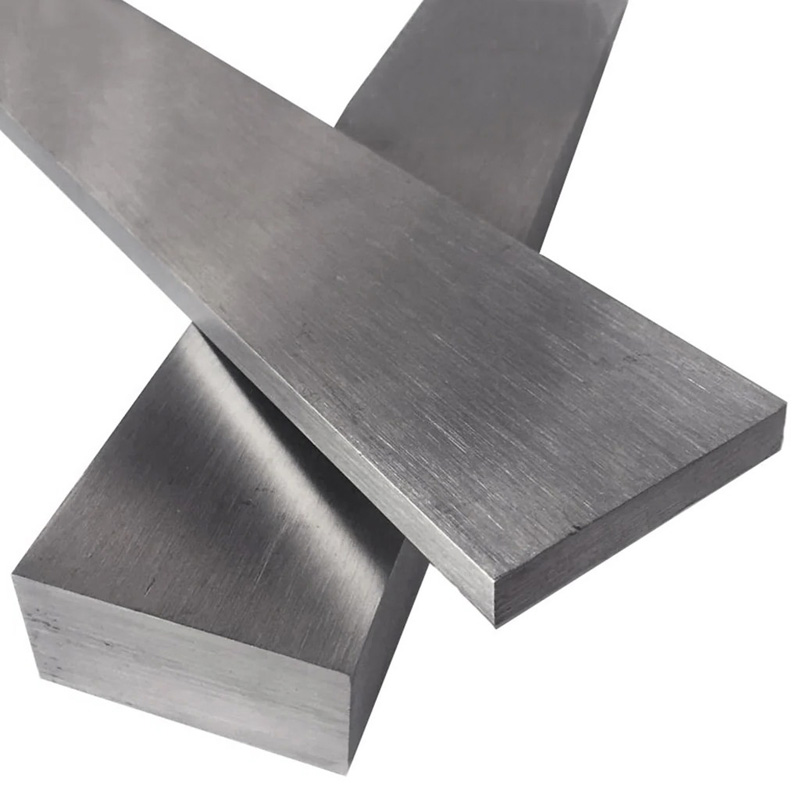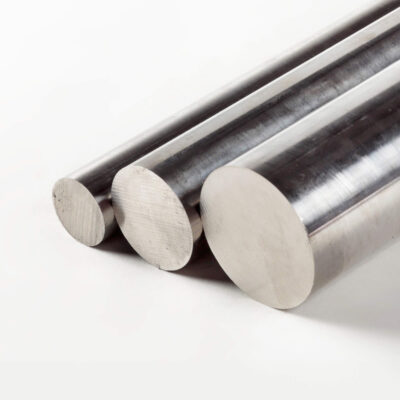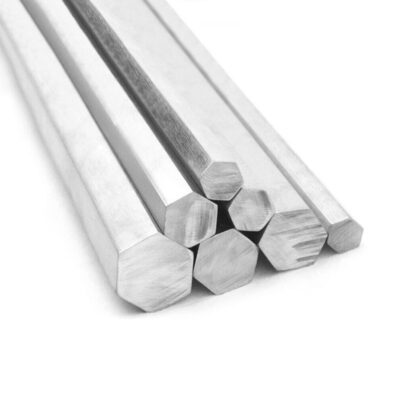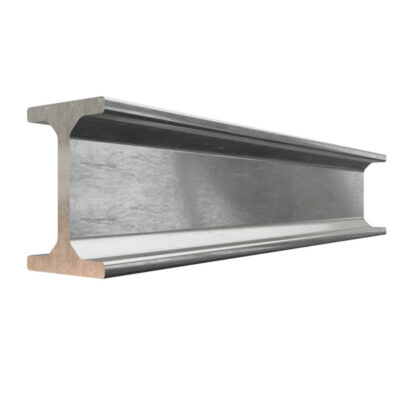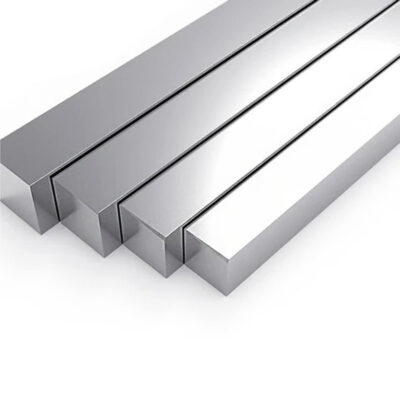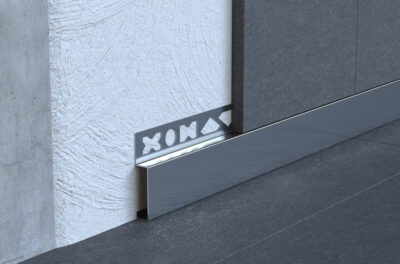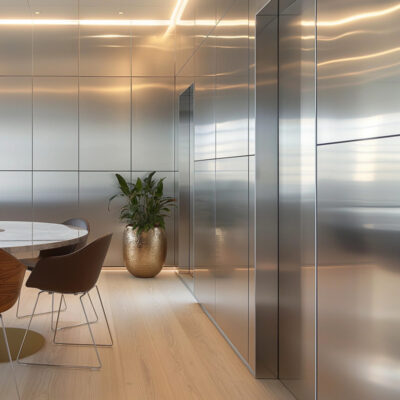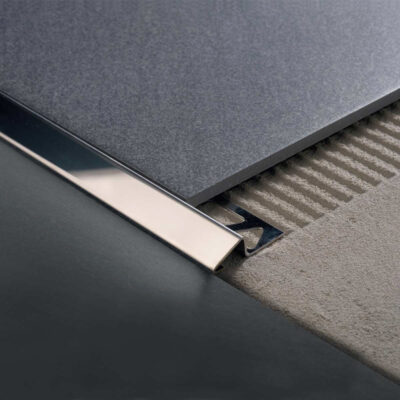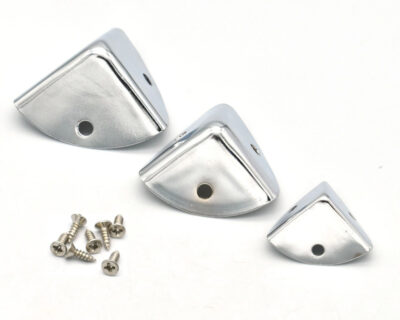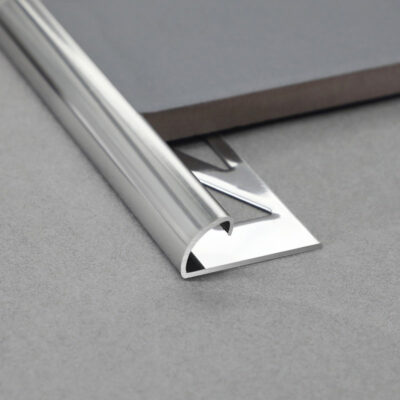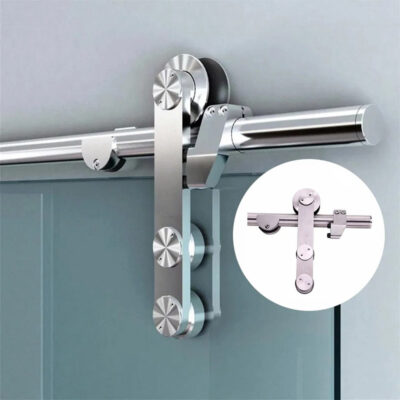Understanding Stainless Steel Flat Bars
The first time I held a stainless steel flat bar, I was struck by its surprising weight and cool, smooth finish. That sensory memory came rushing back recently while touring a fabrication facility in Pittsburgh, where massive coils of steel were being transformed into precisely dimensioned flat bars. What caught my attention wasn’t just the mechanical precision, but the material’s inherent contradiction – brutally strong yet infinitely malleable in the right hands.
Stainless steel flat bars represent one of the most versatile forms of stainless steel stock. These rectangular cross-section products typically feature width substantially exceeding thickness, distinguishing them from square bars. Their composition includes iron alloyed with a minimum of 10.5% chromium, which forms the protective chromium oxide layer giving stainless steel its signature corrosion resistance. Depending on the specific grade, additional elements like nickel, molybdenum, and titanium may be incorporated to enhance particular properties.
The manufacturing process begins with melting and casting the appropriate stainless steel alloy. This is typically followed by hot rolling, where the material is heated to temperatures exceeding 2000°F (1093°C) and passed through a series of rollers to achieve the desired thickness. Many stainless steel flat bars undergo additional cold working to improve mechanical properties and dimensional precision. Final processing may include annealing to reduce internal stresses, edge conditioning, and surface finishing.
Dr. Elena Kovalev, metallurgical specialist at the Steel Research Institute, explains: “What makes stainless steel flat bars particularly valuable is their balanced combination of mechanical strength, corrosion resistance, and formability. The flat profile offers excellent load distribution in structural applications while maintaining the inherent benefits of stainless steel.”
The properties that distinguish stainless steel flat bars include:
- Exceptional corrosion resistance, particularly in grades with higher chromium content
- Excellent strength-to-weight ratio compared to many competing materials
- Temperature resistance ranging from cryogenic to high-heat applications
- Non-magnetic properties in austenitic grades
- Aesthetic appeal with various finish options
- Long-term durability with minimal maintenance
- Recyclability at end of life
While investigating suppliers for a recent project, I noticed significant variations in how manufacturers describe their finishing options. Some use proprietary terminology, while others reference standard finish designations like 2B (smooth, reflective finish) or #4 (brushed finish popular in architectural applications). This lack of standardization can create confusion for first-time buyers unfamiliar with industry terminology.
Stainless steel flat bars serve as fundamental building blocks across numerous applications, from structural supports to decorative elements. As we’ll explore further, understanding their technical capabilities and limitations enables engineers and designers to maximize their potential.
Applications Across Industries
During a recent renovation of Boston’s historic waterfront district, I watched as installers secured gleaming stainless steel flat bars as guardrail supports along a public walkway. When I asked the project manager about the material choice, his answer was telling: “Nothing else gives us this combination of strength, appearance, and longevity in a salt-air environment.” This single application illustrates why stainless steel flat bars have become indispensable across numerous industries.
In construction and architecture, these versatile components serve both functional and aesthetic purposes. Structurally, stainless steel flat bars provide reinforcement for concrete structures, particularly in corrosive environments like bridges, marine facilities, and wastewater treatment plants. The higher initial cost compared to carbon steel is offset by dramatically reduced maintenance and replacement expenses over the structure’s lifetime. Architecturally, they appear in balustrades, handrails, façade support systems, and decorative elements where their clean lines and reflective qualities enhance modern design aesthetics.
The manufacturing sector relies heavily on stainless steel flat bars for equipment components and structural elements. Food processing facilities value their sanitary properties and ease of cleaning, while chemical plants benefit from their resistance to aggressive substances. I recall walking through a pharmaceutical manufacturing facility where every piece of processing equipment incorporated stainless components – a testament to the material’s compatibility with strict hygiene requirements.
| Industry | Common Applications | Key Benefits |
|---|---|---|
| Construction | Structural reinforcement, façade supports, railings, decorative elements | Corrosion resistance, aesthetic appeal, minimal maintenance |
| Manufacturing | Equipment frames, conveyors, tanks, machine components | Hygiene, chemical resistance, durability |
| Transportation | Automotive trim, train interiors, shipbuilding, aircraft components | Weight efficiency, impact resistance, fire safety |
| Energy | Solar mounting systems, offshore platforms, nuclear facilities | Weather resistance, longevity, safety compliance |
| Food & Beverage | Processing equipment, storage systems, dispensing systems | Sanitary properties, clean-ability, non-contamination |
Transportation applications demonstrate the material’s versatility. The automotive industry uses stainless steel flat bars for structural reinforcement, trim pieces, and exhaust system components. The aerospace sector values their strength-to-weight ratio for various internal support structures. In shipbuilding, where corrosion represents a constant threat, stainless steel flat bars find numerous applications from deck hardware to structural elements.
“The widespread adoption of stainless steel flat bars in transportation has accelerated with fuel efficiency concerns,” notes transportation materials specialist James Chen. “Engineers increasingly select higher-strength grades that allow thinner profiles, reducing vehicle weight without compromising structural integrity.”
The energy sector presents perhaps the most demanding applications. Offshore oil platforms subject materials to the triple threat of salt spray, mechanical stress, and chemical exposure. Solar energy installations require mounting systems that will maintain integrity for decades with minimal maintenance. Nuclear facilities demand unfailing performance under extreme conditions. In each case, stainless steel flat bars offer a combination of properties that few alternatives can match.
Agricultural applications might seem less obvious, but modern farming equipment, storage systems, and processing facilities all incorporate stainless steel flat bars where exposure to moisture, chemicals, and organic materials would quickly degrade lesser materials. A farm equipment manufacturer I consulted described switching to stainless components for certain applications after calculating that the extended service life and reduced downtime justified the higher initial investment.
What’s particularly striking across these diverse applications is how stainless steel flat bars often perform critical functions while remaining virtually invisible to end users – the hidden heroes of modern infrastructure.
Technical Specifications and Grades
Walking the floor of a steel service center in Chicago last month, I was overwhelmed by the sheer variety of stainless steel flat bars available. Arranged in neat racks, they ranged from slender pieces barely wider than a finger to substantial bars that would require mechanical assistance to move. This diversity reflects the material’s adaptability to countless applications, each with specific requirements.
Standard dimensions for stainless steel flat bars typically range from 1/8″ to 6″ in thickness (3mm to 150mm) and 1/2″ to 12″ in width (12mm to 300mm). Lengths commonly reach up to 20 feet (6 meters), though custom lengths are readily available. Tolerances vary by production method, but hot-rolled products generally maintain tolerances of ±0.015 inches for thickness and ±0.05 inches for width. Cold-finished bars offer tighter tolerances, often half those values, making them preferable for precision applications.
The grade selection process can be particularly challenging for those new to working with stainless steel. While dozens of specialized grades exist, several dominate the marketplace:
Popular Stainless Steel Grades for Flat Bars
| Grade | Composition | Key Properties | Typical Applications |
|---|---|---|---|
| 304/304L | 18% Cr, 8% Ni | Excellent corrosion resistance, good formability, non-magnetic | Food equipment, architectural, general purpose |
| 316/316L | 16% Cr, 10% Ni, 2% Mo | Superior corrosion resistance, particularly to chlorides | Marine environments, chemical processing, medical |
| 410 | 12% Cr, 0.15% C | Magnetic, heat-treatable, moderate corrosion resistance | Automotive parts, turbine blades, fasteners |
| 430 | 17% Cr | Magnetic, good formability, moderate heat resistance | Automotive trim, appliances, indoor applications |
| Duplex 2205 | 22% Cr, 5% Ni, 3% Mo | High strength, excellent pitting resistance, stress corrosion resistance | Chemical processing, oil & gas, structural components |
During a project consulting for a coastal water treatment facility, I encountered serious disagreement between the engineering team and procurement department regarding grade selection. The engineers specified 316L for its superior chloride resistance, while procurement pushed for 304L to reduce costs. The compromise came after calculating the lifetime maintenance costs for each option, which clearly favored the higher initial investment in 316L.
Mechanical properties vary significantly across grades. For example, austenitic stainless steel (304/316) typically exhibits yield strength around 30,000 psi (207 MPa), tensile strength of 75,000 psi (517 MPa), and elongation of 40%. Meanwhile, duplex grades like 2205 offer nearly twice the yield strength. These differences become critical in structural applications where load-bearing capacity determines material thickness and overall design.
“Engineers frequently overlook the impact of cold working on mechanical properties,” materials scientist Dr. Sarah Watkins told me during a recent interview. “A cold-worked 304 stainless steel flat bar can have up to double the yield strength of its annealed counterpart, though this comes with reduced ductility.”
Surface finish options present another decision point. Common finishes include:
- #1: Hot-rolled, annealed and pickled (dull, rough surface)
- #2B: Cold-rolled, annealed, pickled and passivated (smooth, reflective surface)
- #3: Coarse ground finish (visible grinding lines)
- #4: Brushed finish (popular for architectural applications)
- #8: Mirror finish (highly reflective, used for decorative purposes)
Each finish affects not only aesthetics but also practical considerations like cleanability, light reflection, and even corrosion resistance in certain environments. The finish selection process requires balancing performance requirements, appearance preferences, and budget constraints.
When sourcing stainless steel flat bars for specific applications, requesting material test certificates (MTCs) provides verification of chemical composition and mechanical properties. This documentation becomes especially important for critical applications where material failure could have serious consequences.
Selection Criteria for Projects
Three years ago, I joined a team evaluating material options for a pedestrian bridge spanning a saltwater inlet in Florida. The heated debate between advocates for painted carbon steel, aluminum, and stainless steel flat bars highlighted the complex decision matrix involved in material selection. After weeks of analysis, stainless steel won out – not because it excelled in every category, but because it offered the best overall performance for this specific application’s requirements.
Environmental considerations typically stand at the forefront of the selection process. The exposure conditions fundamentally determine whether stainless steel’s corrosion resistance justifies its higher initial cost. For outdoor applications, factors like proximity to saltwater, industrial pollutants, or de-icing chemicals significantly impact material longevity. When I consulted with a manufacturing facility in Houston’s industrial corridor, we specified 316L stainless steel flat bars for external structures specifically because of the combined exposure to coastal air and chemical emissions.
Temperature extremes present another important consideration. Austenitic stainless steels maintain their mechanical properties from cryogenic temperatures up to about 1000°F (538°C), making them suitable for both arctic installations and moderate-heat applications. For higher temperatures, specialized grades like 309 or 310 offer improved performance. At a geothermal power plant project in Iceland, engineers selected specialized high-temperature stainless steel flat bars for components near the steam generation systems while using standard 316 for peripheral structures.
| Selection Factor | Considerations | Relevant Stainless Grades |
|---|---|---|
| Corrosion Environment | Salt exposure, chemicals present, humidity levels | 316/316L for marine/chemical, 304/304L for moderate exposure |
| Mechanical Requirements | Required strength, hardness, fatigue resistance | Duplex grades for high strength, austenitic for moderate strength with high ductility |
| Temperature Range | Maximum/minimum operating temperatures | 304/316 for -320°F to 1000°F, specialized grades for higher temps |
| Regulatory Requirements | Food safety, medical standards, nuclear specifications | 304/316 for food/medical, specialized grades for nuclear |
| Fabrication Needs | Welding requirements, forming complexity, machining needs | 304L/316L for extensive welding, 303 for extensive machining |
| Aesthetic Requirements | Surface finish, color consistency, reflectivity | 304/316 with #4, #6, or #8 finishes for architectural applications |
| Budget Constraints | Initial cost vs. lifetime maintenance | 409/430 for budget constraints, 316L for maximum longevity |
Load-bearing requirements dictate both material grade and dimensioning. Structural applications demand careful analysis of yield strength, elastic modulus, and fatigue resistance. During a warehouse renovation project, I witnessed firsthand how replacing carbon steel support elements with properly sized duplex stainless steel flat bars allowed for a significant reduction in member size while providing superior corrosion performance.
Cost considerations can’t be ignored, especially for large-scale projects. The initial material cost for stainless steel flat bars typically runs 3-5 times higher than carbon steel equivalents. This premium can be justified through lifecycle cost analysis incorporating:
- Elimination or reduction of coating/painting costs
- Reduced inspection and maintenance requirements
- Extended service life
- Higher residual value at end of life
- Potential weight savings through higher strength-to-weight ratios
“Many clients initially balk at stainless steel pricing,” notes architectural engineer Patricia Vega, “until we demonstrate the true cost of ownership. A thirty-year projection typically shifts the conversation from ‘Can we afford stainless?’ to ‘Can we afford not to use stainless?'”
Fabrication requirements merit careful consideration. While most stainless steel flat bars offer good formability, some grades work-harden rapidly during machining or cold forming. Special techniques or equipment may be required for optimal results. During a healthcare facility project, we discovered too late that the specified 440C stainless steel flat bars for certain components created unexpected machining challenges that impacted the production schedule.
When evaluating options for a recreational boating dock in the Great Lakes, we ultimately selected 316L stainless steel flat bars despite significant pressure to reduce costs. Five years later, while inspecting the installation, I found the stainless components in nearly pristine condition while neighboring facilities with galvanized steel showed substantial deterioration – a vivid real-world validation of our selection criteria.
Installation and Fabrication Methods
My first attempt at welding stainless steel flat bars was a humbling experience. Despite previous success with carbon steel, I watched in dismay as my welds discolored and later developed cracks during testing. That frustrating afternoon taught me what experienced fabricators already know: stainless steel demands specific techniques and considerations during fabrication and installation.
Cutting stainless steel flat bars requires approaches different from those used with carbon steel. While standard methods like band sawing, abrasive cutting, and shearing remain applicable, tool selection and operating parameters need adjustment. Slower cutting speeds, appropriate lubricants, and tools specifically designed for stainless steel help prevent work hardening and excessive heat generation. During a recent retrofit project, our contractor attempted to use standard abrasive blades for cutting 316 stainless steel flat bars – the result was excessive heat buildup, blue discoloration, and premature blade failure. Switching to specialized stainless steel cutting blades resolved these issues.
Welding presents perhaps the greatest fabrication challenge. Keith Dominguez, a welding engineer I consulted during an architectural project, emphasizes several critical factors: “With stainless steel flat bars, controlling heat input becomes essential. Excessive heat causes distortion, sensitization at the heat-affected zone, and potential loss of corrosion resistance.” Common welding processes include:
- TIG (Tungsten Inert Gas): Produces high-quality, precise welds with excellent appearance
- MIG (Metal Inert Gas): Offers faster deposition rates for thicker materials
- Stick welding: Less common but viable for field repairs with proper electrodes
Proper filler metal selection is crucial – it must be compatible with the base material and provide equivalent or superior corrosion resistance. For critical applications, post-weld cleaning and passivation restore the chromium oxide layer that gives stainless steel its corrosion resistance.
Bending and forming operations require consideration of stainless steel’s work hardening characteristics. Austenitic grades like 304 and 316 work harden rapidly, increasing strength but reducing ductility as forming progresses. This property necessitates:
- Larger bend radii compared to carbon steel (typically 1.5-2 times material thickness)
- More powerful forming equipment due to higher strength
- Special tooling to prevent material galling and surface damage
During a custom railing fabrication project, we learned to complete all cutting operations before bending, as the hardened material at bend points would damage cutting tools and produce poor edge quality.
| Fabrication Method | Key Considerations | Best Practices |
|---|---|---|
| Cutting | Work hardening, heat generation, burr formation | Use specialized stainless cutting tools, maintain sharp edges, apply appropriate lubricant |
| Welding | Heat input, distortion, corrosion resistance at welds | Select proper filler metals, use backing gas where possible, clean thoroughly post-weld |
| Bending/Forming | Work hardening, springback, surface protection | Allow for greater springback, use larger bend radii, protect surface during forming |
| Machining | Tool wear, heat buildup, chip control | Use lower speeds and higher feeds than carbon steel, maintain sharp tools, ensure good chip clearance |
| Fastening | Galling, galvanic corrosion | Use stainless fasteners, apply anti-galling compounds, isolate dissimilar metals |
Surface preparation and protection demand particular attention throughout fabrication and installation. Stainless steel flat bars typically arrive with a protective film or covering that should remain in place until final installation. We learned this lesson the hard way when contractors removed the protective covering too early during an exterior cladding project, resulting in concrete splatter that required extensive cleaning.
For architectural applications, consider that fingerprints, handling marks, and minor scratches become highly visible on polished surfaces. During a high-profile lobby renovation, our team instituted strict handling protocols including cotton gloves for all stainless components and temporary adhesive films on visible surfaces until completion.
Fastening systems deserve careful consideration. When mechanical fasteners are required, they should match or exceed the corrosion resistance of the base material. Using carbon steel fasteners with stainless steel flat bars creates galvanic cells that accelerate corrosion. Similarly, when connecting to dissimilar metals, isolation techniques using non-conductive washers or bushings prevent galvanic reactions.
After installation, proper cleaning and passivation ensure optimal performance. This process typically involves:
- Degreasing to remove fabrication oils and contaminants
- Cleaning with appropriate stainless steel cleaners
- Passivation treatment (typically nitric or citric acid solutions) to restore the chromium oxide layer
- Thorough rinsing and drying
This multi-step process, while adding time and cost, establishes the foundation for decades of trouble-free service.
Maintenance and Longevity
Standing before a sixty-year-old stainless steel balustrade at the Miami Marine Terminal last month, I ran my fingers across the still-smooth surface of the flat bar supports. Despite decades of salt spray, tropical storms, and countless tourists leaning against it, the structure remained structurally sound and visually appealing. This remarkable durability illustrates why proper maintenance of stainless steel flat bars yields exceptional longevity.
The perception that stainless steel is “maintenance-free” requires qualification. While certainly low-maintenance compared to many alternatives, stainless steel flat bars benefit from periodic attention to maintain both appearance and performance. The frequency and intensity of maintenance depend primarily on the environment and application.
For exterior applications in benign environments (rural, non-coastal areas with minimal pollution), annual cleaning may suffice. Conversely, harsh environments like coastal zones or industrial areas with airborne contaminants may require quarterly or even monthly cleaning regimens. During a hospital renovation project, we established different maintenance schedules for stainless steel elements based on their location – monthly cleaning for exterior elements exposed to urban pollution, quarterly for interior public spaces, and semi-annually for administrative areas.
The cleaning process itself remains relatively simple:
- Remove loose debris with soft brushes or low-pressure water
- Wash with mild soap and water or specialized stainless steel cleaners
- Rinse thoroughly with clean water
- Dry completely to prevent water spotting
For stubborn stains or minor surface rust (often called “tea staining”), non-abrasive cleaners containing oxalic acid effectively restore appearance without damaging the passive layer. I’ve found that certain common household products like white vinegar or baking soda paste can address minor staining when professional cleaners aren’t readily available.
Surface contamination represents the primary enemy of stainless steel flat bars. Iron particles from nearby grinding of carbon steel, airborne industrial particulates, or even prolonged contact with non-stainless fasteners can initiate corrosion sites. “What most people identify as stainless steel corrosion is actually progressive corrosion of carbon steel contaminants on the surface,” explains materials conservation specialist Dr. Robert Miyamoto. “Once these contaminants are removed and the surface properly cleaned, the stainless steel itself typically remains undamaged.”
A preventative maintenance schedule might include:
| Environment | Cleaning Frequency | Inspection Points | Recommended Products |
|---|---|---|---|
| Coastal/Marine | Monthly to quarterly | Crevices, fastener points, water trap areas | Mild detergent, specialized stainless cleaners, fresh water rinse |
| Urban/Industrial | Quarterly to semi-annually | Areas exposed to precipitation, horizontal surfaces | Mild detergent, oxalic acid cleaners for stubborn stains |
| Rural/Benign | Semi-annually to annually | Inspect for organic debris accumulation | Simple soap and water cleaning |
| Interior/Protected | Annually or as needed | Focus on high-touch areas, check for staining | Microfiber cleaning with stainless polish as needed |
For architectural applications where appearance is paramount, directional finishes like brushed or lined patterns should be cleaned following the direction of the grain to prevent visible scratching. I’ve observed maintenance crews inadvertently creating cross-grain scratches that required professional refinishing to restore appearance.
When damage does occur, repair options exist. Minor scratches in non-structural applications can be addressed with specialized stainless steel polishing systems that restore the surface without removing significant material. Deeper gouges or structural damage may require professional intervention, potentially including welding repairs and refinishing.
For critical structural applications, periodic professional inspection remains prudent despite stainless steel’s reputation for reliability. During a recent assessment of a thirty-year-old industrial installation, we discovered localized corrosion where stainless steel flat bars contacted carbon steel structural elements without proper isolation. Early detection allowed targeted repairs before structural integrity was compromised.
The environmental benefits of stainless steel flat bars extend beyond their longevity. At end of life, the material remains 100% recyclable without degradation in quality, creating a closed-loop material cycle. The high scrap value also typically offsets demolition or removal costs, presenting another lifecycle advantage compared to alternatives.
Market Trends and Innovations
Last week, while touring a specialty metals facility outside Pittsburgh, I watched laser cutting equipment precisely shaping stainless steel flat bars into intricate components for aerospace applications. The plant manager explained how this technology has transformed their business: “Five years ago, these parts would have required multiple machining operations and generated substantial material waste. Today, we produce them in a single process with minimal scrap.” This technological evolution illustrates the dynamic nature of the stainless steel flat bar market.
The global market for stainless steel flat products, including flat bars, continues to expand at approximately 5-6% annually, outpacing many other construction and manufacturing materials. This growth stems from both increased usage in traditional applications and expansion into emerging sectors. According to industry analysis, the construction sector remains the largest consumer of stainless steel flat bars, followed by industrial equipment manufacturing, transportation, and energy.
Several significant trends are reshaping the marketplace:
Precision manufacturing technologies have revolutionized fabrication processes. Advanced laser cutting, water jet cutting, and computer-controlled forming systems enable complex geometries and tighter tolerances than previously possible. These capabilities open new design possibilities while reducing material waste and labor costs. During a recent architectural project, we specified custom-perforated stainless steel flat bars that would have been prohibitively expensive using traditional methods but became economically viable through automated laser cutting.
Specialized surface treatments extend performance in demanding environments. Beyond traditional passive finishes, innovations like electrochemical coloring, laser surface texturing, and advanced coatings provide both aesthetic and functional benefits. In a high-traffic commercial development, we recently specified laser-textured stainless steel flat bars for balustrades that maintain appearance longer by masking minor scratches and fingerprints.
“The development of enhanced surface technologies represents a major advance for architectural applications,” notes materials scientist Dr. Maya Patel. “These treatments maintain stainless steel’s inherent properties while addressing historical limitations regarding fingerprinting and visual consistency across large installations.”
Material efficiency continues improving through advanced product design. Higher-strength stainless steel grades allow thinner profiles with equivalent performance, reducing material usage, weight, and cost. This trend parallels broader sustainability initiatives across manufacturing and construction sectors. In a recent industrial equipment redesign project, switching to higher-strength duplex stainless steel flat bars allowed a 25% reduction in material thickness while maintaining required performance parameters.
Supply chain considerations increasingly influence market dynamics. Recent global disruptions have prompted many manufacturers to diversify sourcing strategies, often prioritizing regional suppliers despite potential cost premiums. During conversations with procurement specialists at a major transportation equipment manufacturer, I learned they’ve shifted from global sourcing primarily based on price to a more balanced approach emphasizing supply stability and reduced logistics complexity.
Sustainability metrics now factor prominently in material selection. Beyond traditional performance criteria, specifiers increasingly evaluate:
- Embodied carbon and energy
- Recycled content percentage
- Regional sourcing availability
- End-of-life recyclability
- Environmental impact during production
Stainless steel flat bars generally perform well against these measures, with typical recycled content exceeding 60% and complete recyclability at end of life. The material’s longevity further enhances its sustainability profile by amortizing environmental impacts over decades of service.
“We’re seeing growing interest in environmental product declarations (EPDs) for stainless steel products,” explains sustainability consultant Jennifer Zhao. “Specifiers want quantifiable metrics to support material choices beyond general claims of ‘green’ performance.”
Economic factors continue influencing market dynamics, particularly the volatility of nickel prices, which significantly impact austenitic stainless steel costs. This price uncertainty has accelerated interest in lean duplex grades that maintain performance with reduced nickel content. During a recent infrastructure project bid evaluation, the specification permitted either 316L or lean duplex 2304 stainless steel flat bars, allowing fabricators to optimize material selection based on market conditions at time of purchase.
Looking forward, several emerging development areas bear watching:
- Additive manufacturing techniques for complex stainless steel components
- Integration of sensing technologies into stainless structures for performance monitoring
- Advanced joining methods reducing heat-affected zones
- Biologically-inspired surface textures enhancing specific performance characteristics
What impresses me most about these innovations is how they build upon stainless steel’s established advantages rather than attempting to overcome fundamental limitations. Unlike many construction materials that require continuous reformulation to address inherent weaknesses, stainless steel flat bars benefit from innovations that primarily enhance fabrication, appearance, or application-specific performance.
Conclusion: Making Informed Decisions
Reflecting on a career spanning dozens of projects involving stainless steel flat bars, I’ve come to appreciate both the material’s remarkable capabilities and the complexity of matching those properties to specific application requirements. The countless decisions that determine a project’s success often hinge on understanding not just what stainless steel can do, but where it offers meaningful advantages over alternatives.
Selection begins with honest assessment of environmental conditions and performance requirements. In corrosive environments or applications demanding sanitary surfaces, stainless steel flat bars provide clear advantages that frequently justify higher initial costs. Conversely, in protected environments without specific corrosion or aesthetic requirements, the premium for stainless may be unnecessary. The most successful projects I’ve participated in began with thorough evaluation of these fundamental parameters before material selection discussions.
Life cycle cost analysis often reveals stainless steel’s economic advantages. A transportation infrastructure project I consulted on initially rejected stainless steel flat bars for support components based on acquisition cost. After calculating thirty-year maintenance requirements for alternatives—including periodic repainting, inspection, and anticipated partial replacements—stainless emerged as more economical despite its higher initial cost. This pattern repeats across numerous applications where maintenance access is difficult, downtime is costly, or service life expectations exceed 15-20 years.
Technical specifications demand careful attention to detail. Selecting appropriate grades, dimensions, and finishes requires balancing multiple factors including mechanical requirements, corrosion exposure, fabrication methods, and aesthetic considerations. The most common issues I’ve encountered stem not from stainless steel limitations but from improper specification—using 304 where 316 is needed, or specifying dimensions without considering fabrication tolerances.
Fabrication expertise significantly impacts outcomes. Stainless steel flat bars require specific handling and processing techniques that differ from carbon steel practices. Partnering with fabricators experienced in stainless steel work typically yields superior results, particularly for architecturally exposed or structurally critical applications. During a courthouse renovation, we qualified fabricators based on previous stainless steel experience and in-shop inspection of similar completed work, which prevented potential issues that emerged in early mockups from inexperienced workshops.
While exploring innovative applications for E-Sang products recently, I’ve observed the continuing evolution of how designers and engineers employ stainless steel flat bars. From traditional structural applications to cutting-edge architectural expressions, the material’s combination of performance, aesthetics, and sustainability continues driving adoption across diverse sectors.
The environmental credentials of stainless steel flat bars grow increasingly relevant in our carbon-conscious world. Beyond durability and recyclability, the material’s relatively low embodied carbon when measured across its actual service life makes it increasingly attractive for projects with sustainability goals. This advantage becomes particularly significant when comparing full lifecycle impacts rather than simply initial manufacturing emissions.
As with any material, stainless steel flat bars have limitations. They carry higher initial costs than carbon steel alternatives, require specific fabrication expertise, and can be susceptible to certain types of localized corrosion in extreme environments. Understanding these constraints allows for appropriate application and mitigation strategies where needed.
The future appears promising for this versatile material. Advancements in manufacturing technology continue reducing fabrication costs while expanding design possibilities. Innovative surface treatments enhance both performance and aesthetics. Meanwhile, growing emphasis on lifecycle performance and sustainability plays to stainless steel’s inherent strengths.
For professionals navigating material selection decisions, my advice remains consistent: thoroughly analyze application requirements, consider full lifecycle impacts, engage experienced fabricators, and insist on appropriate quality control measures. When these principles guide the process, stainless steel flat bars frequently emerge as not merely a viable option, but an optimal solution delivering value that extends decades beyond initial installation.
Frequently Asked Questions about Stainless Steel Flat Bars
Q: What are Stainless Steel Flat Bars and how are they manufactured?
A: Stainless steel flat bars are long, rectangular pieces of stainless steel, known for their durability and corrosion resistance. They are manufactured through processes such as hot rolling or cold drawing, resulting in products with precise dimensions. Hot rolled bars typically have a gray finish and tighter tolerances, while cold-drawn bars offer a smoother surface.
Q: What are the primary grades of Stainless Steel Flat Bars and their uses?
A: The most common grades are 304 and 316. The 304 grade is used for general-purpose applications, including kitchen equipment and architectural projects, due to its excellent corrosion resistance. The 316 grade offers superior resistance to harsh environments, making it ideal for marine and chemical processing applications.
Q: How do true flat bars differ from sheared and edged flat bars?
A: True flat bars are manufactured to exact dimensions, offering uniform finishes and sharp corners. They are precision-engineered for applications requiring high precision. Sheared and edged bars, on the other hand, are cut from larger plates, resulting in less precise tolerances but are more cost-effective and suitable for less demanding applications.
Q: What are some common applications of Stainless Steel Flat Bars?
A: Stainless steel flat bars are used across multiple industries due to their strength and versatility. Key applications include:
- Construction: Structural supports and reinforcements.
- Automotive: Production of vehicle components.
- Architecture: Functional and decorative elements like railings.
- Marine Applications: Ideal for 316 grade due to its resistance to saltwater.
Q: Can Stainless Steel Flat Bars be customized?
A: Yes, many suppliers offer customization services, including cutting, polishing, and fabricating to meet specific project needs. This allows buyers to specify dimensions and finishes tailored to their requirements.
Q: What factors should I consider when choosing Stainless Steel Flat Bars?
A: When selecting stainless steel flat bars, consider the application’s requirements, such as dimensions, surface finish, and corrosion resistance. Choose between true flat bars for precision applications or sheared and edged bars for cost-effectiveness. Also, ensure compliance with relevant manufacturing standards and consider custom options for tailored specifications.

